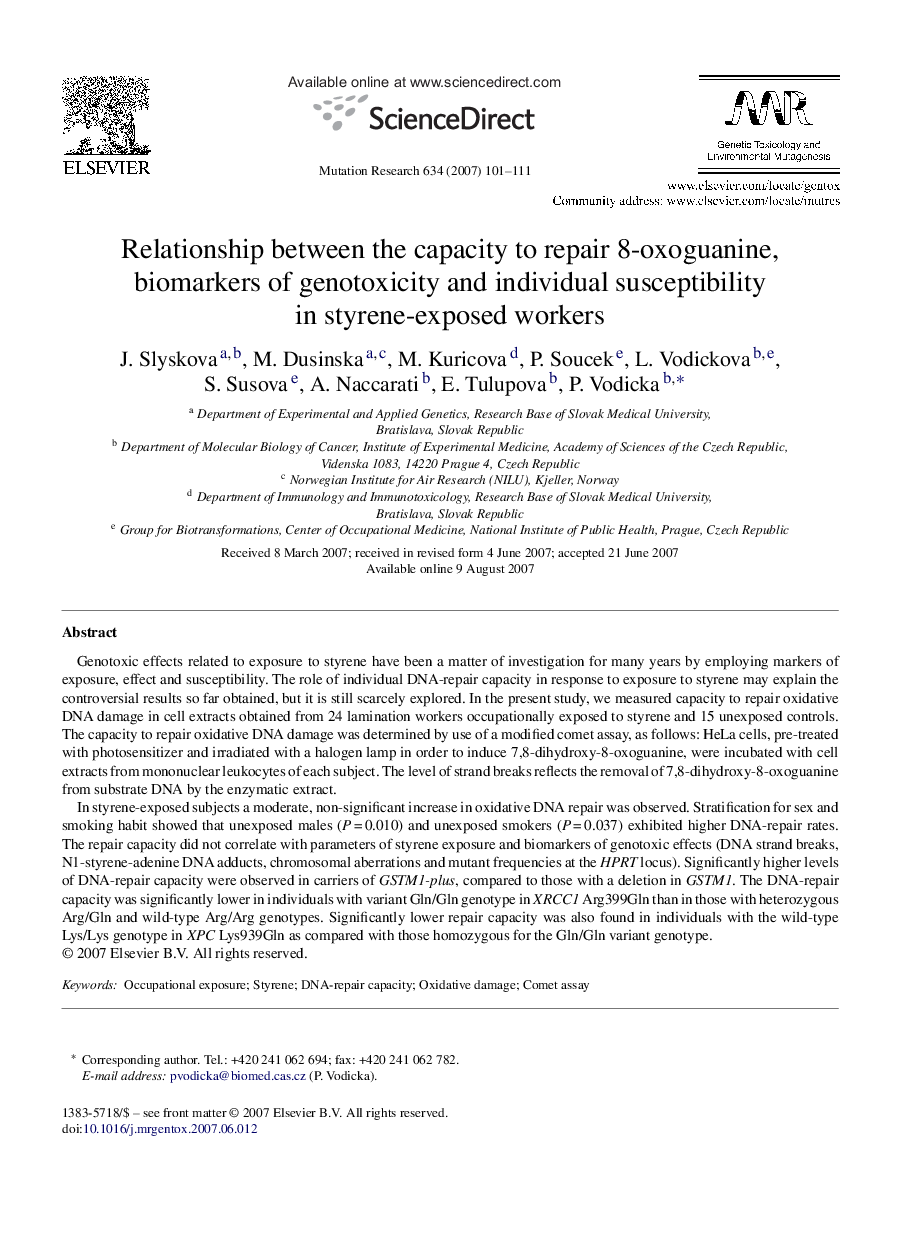| Article ID | Journal | Published Year | Pages | File Type |
|---|---|---|---|---|
| 2149052 | Mutation Research/Genetic Toxicology and Environmental Mutagenesis | 2007 | 11 Pages |
Abstract
In styrene-exposed subjects a moderate, non-significant increase in oxidative DNA repair was observed. Stratification for sex and smoking habit showed that unexposed males (PÂ =Â 0.010) and unexposed smokers (PÂ =Â 0.037) exhibited higher DNA-repair rates. The repair capacity did not correlate with parameters of styrene exposure and biomarkers of genotoxic effects (DNA strand breaks, N1-styrene-adenine DNA adducts, chromosomal aberrations and mutant frequencies at the HPRT locus). Significantly higher levels of DNA-repair capacity were observed in carriers of GSTM1-plus, compared to those with a deletion in GSTM1. The DNA-repair capacity was significantly lower in individuals with variant Gln/Gln genotype in XRCC1 Arg399Gln than in those with heterozygous Arg/Gln and wild-type Arg/Arg genotypes. Significantly lower repair capacity was also found in individuals with the wild-type Lys/Lys genotype in XPC Lys939Gln as compared with those homozygous for the Gln/Gln variant genotype.
Related Topics
Life Sciences
Biochemistry, Genetics and Molecular Biology
Cancer Research
Authors
J. Slyskova, M. Dusinska, M. Kuricova, P. Soucek, L. Vodickova, S. Susova, A. Naccarati, E. Tulupova, P. Vodicka,
